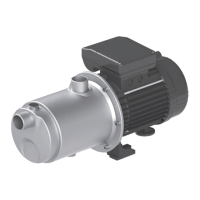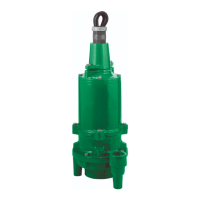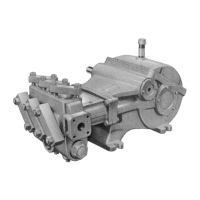22 22
ENGLISH
• Special maintenance may be required
to clean the pump and replace any
worn parts.
• If the pump is not used for prolonged
periods (e.g. for an entire season) it
should be drained completely rinsed
with clean water and stored in a dry
location.
• If the pump is used for applications
with drinking water for human con-
sumption and it is not used for a long
period, repeat the procedures listed in
Installation chapter.
QUICK TROUBLE
SHOOTING GUIDE
Refer to the “safety instructions”.
The pump does not work
• No power supply = turn on the switch
and check that no electrical connec-
tions are loose or defective.
• Check the mains voltage
• Fuse blown = check that the cables
and relative connections are not de-
fective and replace the fuse if neces-
sary
• The single phase motor thermal cu-
tout has tripped = this is reset auto-
matically once the motor has cooled
• Motor overload cutout has tripped
= check that the cables and relative
connections are not defective, check
that the pump is not blocked mecha-
nically, or whether the pump winding
is damaged (replace if necessary)
• Electrical power line damaged =
replace
• Pump blocked mechanically = clean
The pump stops after a short interval of
operation due to a tripped motor pro-
tection device
• Excessive current absorption = check
the operating condition of the pump
• If foreign bodies are present, blocking
hydraulics = clean the hydraulic com-
ponents
• Phase missing on power supply (three
phase motor) = check the electrical
power supply
• The single phase motor thermal cu-
tout has tripped = this is reset auto-
matically once the motor has cooled;
check installation conditions
• Thermal cutout protection setting or
fuses not suitable = check protection
devices with respect to rated current
of pump
• Power cable damaged = replace
component
• Motor damaged = replace component
The pump starts up but does not deliver
liquid
• Pump is not primed = repeat the
"pump priming" procedure
• The pump takes in air = check the
liquid level, operation of the foot valve
and the suction pipeline
• The foot valve is blocked in the closed
position = replace or clean the valve
• For self-priming pumps only: The li-
quid column above the check valve on
the delivery pipeline prevents self-pri-
ming of the pump = drain the delivery
pipeline. Check that check valve does
not retain liquid in the delivery pipe-
line. Repeat the start-up procedure.
Pump performance is reduced
• Pipelines obstructed = check pipelines
